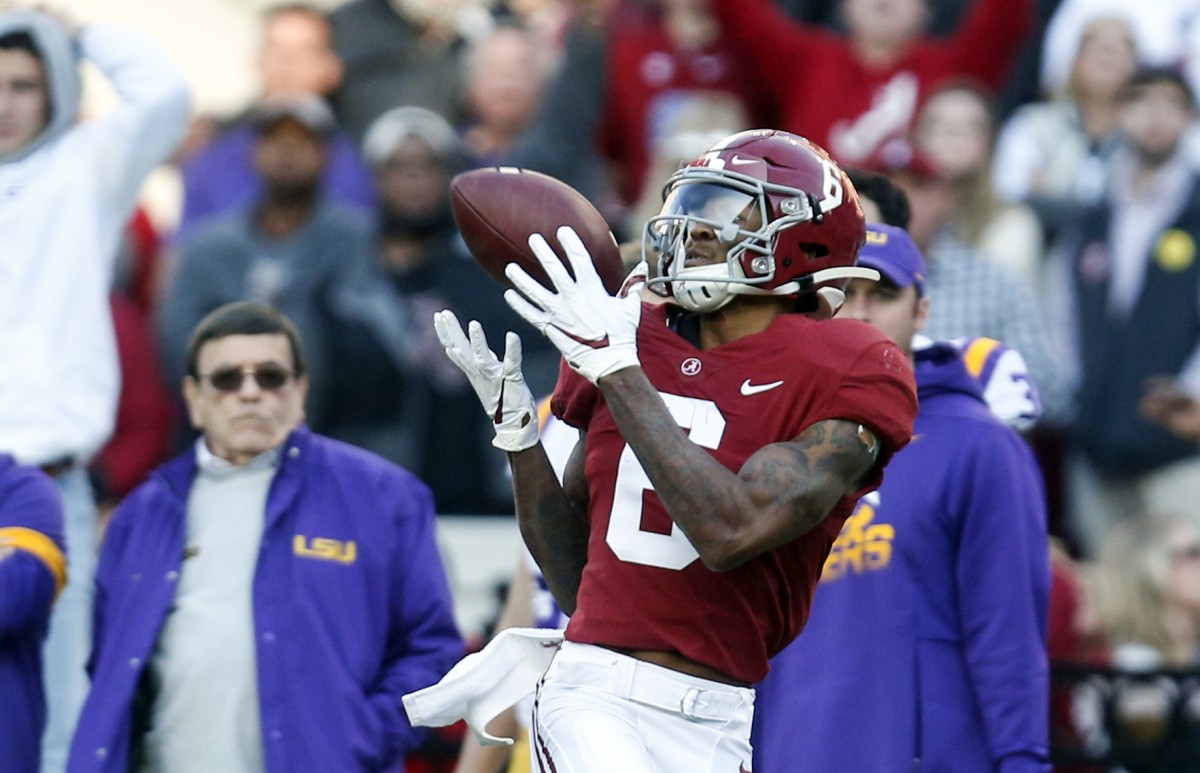When you’re looking to add a cornerback to your roster via free agency, trade, or the draft, you had better consider scheme fit and skill sets, or you’re basically hurling free agent money, the players and/or picks you gave up in a trade, and/or draft capital, right out the window.
Negative examples abound, but let’s go with former Chargers and Titans cornerback Desmond King, an impending free agent in the 2021 league year.
Before the November trade that sent him from Los Angeles to Tennessee, King had allowed 10 receptions on 15 targets for 60 yards, 47 yards after the catch, no touchdowns, no interceptions, and an opponent passer rating of 74.3. With the Titans, King allowed 27 catches on 39 targets for 312 yards, 192 yards after the catch, two touchdowns, no interceptions, and an opponent passer rating of 119.8.
The Titans, who allowed a league-high 23 touchdowns and grabbed just one interception when playing man coverage per Sports Info Solutions, found themselves getting splattered all season on defense due to a negligible pass rush and very little idea of how to best use their defensive backs.
The Chargers, who allowed 20 touchdowns and had eight interceptions in zone coverage, obviously had a better bead on the marriage of personnel and scheme.
When playing zone last season, King allowed 13 catches on 16 targets for 85 yards, no touchdowns, and no interceptions. When playing man last season, King allowed 12 catches on 21 targets for 169 yards, two touchdowns, and no interceptions.
Sometimes, this isn’t hard.
“He’s a player that we felt like could help us, come in and play DB. He’s been disruptive. He’s an effective blitzer and has done some things,” Titans head coach Mike Vrabel said of King after the Titans acquired him. “From everything that we’ve heard, he’s a player that loves football and is competitive that has played in a number of spots and in the kicking game.”
So… you trade for a guy, you make him play the primary coverages he can’t handle, and now, he’s a free agent. That’s one way to waste a 2021 sixth-round pick.
On the whole, King is an above-average primary slot cornerback who can stay sticky with receivers on short and intermediate routes, and he did cause a lot of incompletions on extended plays. Zone-heavy teams like the Seahawks, Buccaneers, Browns, Panthers, or Giants should definitely give King’s agents a call. Man-heavy teams like the Titans (who should be banned from acquiring zone cornerbacks for at least the next three seasons as penance for what they did to this guy), Saints, Cardinals, Lions, and Dolphins should probably stay away.
Moving to the draft, let’s look at two examples of weird fits from the 2020 season. Alabama’s Trevon Diggs and Louisiana Tech’s Amik Robertson were two of the NCAA’s most dominant man-coverage cornerbacks in the 2019 season, but each player was selected by zone-heavy teams whose overall defenses resembled car crashes more often than not.
In 2019 for Nick Saban, Diggs allowed seven completions on 23 targets in man coverage for 73 yards, no touchdowns, two interceptions, and a preposterous opponent quarterback rating of 5.03. But Stefon Diggs’ younger brother was unfortunately selected with the 51st overall pick in the second round by the Cowboys, who had just hired defensive coordinator Mike Nolan, and Nolan was preparing to do a heavy waste job on a defense that had resided in the middle of the pack before his arrival.
Why is the Cowboys’ defense so bad? It’s complicated.
When Diggs operated in coverages that allowed him to use his instincts, aggressiveness, and athleticism, he was great. When he was presented with Nolan’s overcomplicated muck… not so much. Dallas played 364 of their 512 pass defense snaps in zone coverage, and Diggs allowed 45 catches on 76 targets for 650 yards, 198 yards after the catch, six touchdowns, three interceptions, and an opponent passer rating of 96.9. Perhaps Dan Quinn, Dallas’ new defensive coordinator, will give Diggs the right schematic tools to work with, and bring out the best in the player.
Robertson, who tied for the NCAA lead with four picks in man coverage, was selected by the Raiders in the fourth round of the 2020 draft. The Raiders played just 175 of their 579 pass coverage snaps in any iteration of man coverage, and Robertson had just 35 cornerback snaps all season.
In pass coverage, on 28 snaps, Robertson allowed five catches on six targets for 76 yards, 27 yards after the catch, one touchdown, no interceptions, and an opponent passer rating of 158.3 — the highest passer rating any NFL quarterback can achieve. Perhaps Gus Bradley, Las Vegas’ new defensive coordinator, will give Robertson the right schematic tools to work with, and bring out the best in the player.
You get the idea.
In any event, this need for the player and the playbook to match — and the repeated examples of teams valuing traits over specific skill sets at one of the NFL’s most crucial positions — had me wondering which draft-eligible cornerbacks were the best in which kinds of coverage. A bit of pre-draft homework NFL teams should be doing as well. Thanks to the Sports Info Solutions database, we can all do just that.











